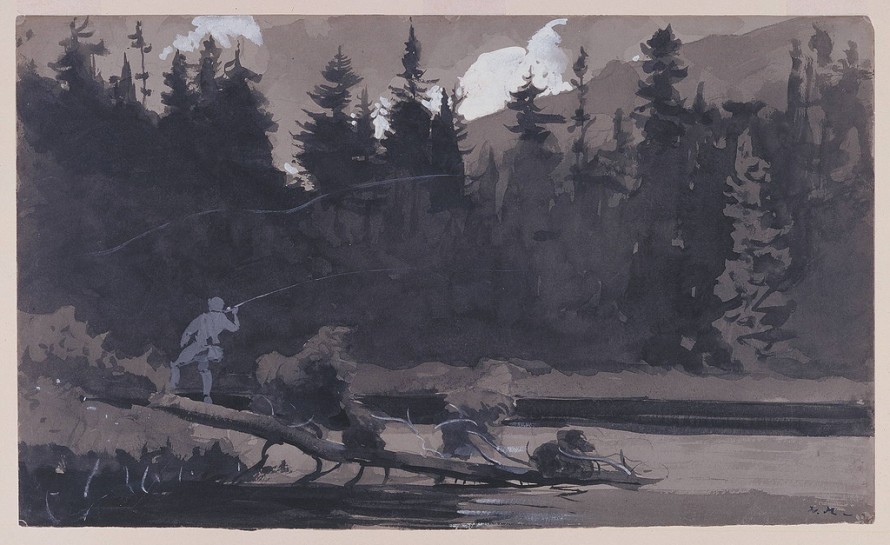Winslow Homer and his brother Charles Savage Homer Jr. were avid fly-fishermen. They went on many fishing trips together in warm weather at the North Woods Club in the Adirondacks and at the exclusive Torelli Fish and Game Club in the province of Quebec, and during the winter months on the Saint John’s River, Florida. Fortunately, Homer was able to combine his avocation with his professional career as an artist. He was acutely aware that his watercolors of fishing-related subjects would be popular with a certain male clientele who were keen fishermen.
This beautiful watercolor, among the best of Cooper-Hewitt’s Homer works, shows an isolated fisherman, on the edge of Lake St. George in Canada, casting his rod and line with the expectation of catching a land-locked salmon native to this area, known as ouananiche. The work is among a small group of monochromatic watercolors that Homer executed fairly late in his artistic career between 1893 and 1902. By this time, Homer was an acknowledged master of the watercolor medium and had experimented with a variety of watercolor techniques. Working in monochrome created a new technical challenge of using a limited range of values from black to white to achieve the impression of different colors. The silvery stillness of this scene reaches the level of poetry, unlike anything else in Homer’s oeuvre.
